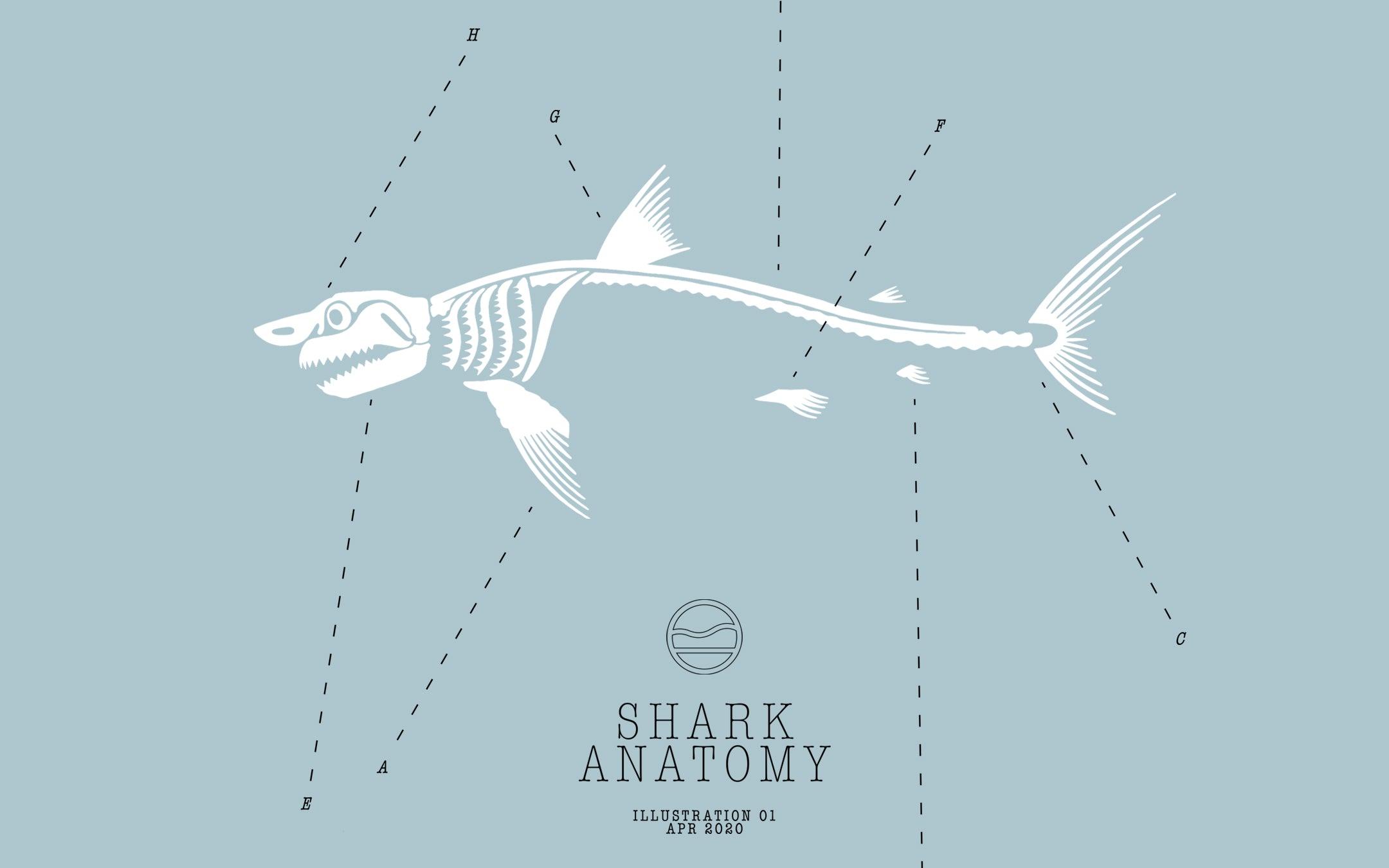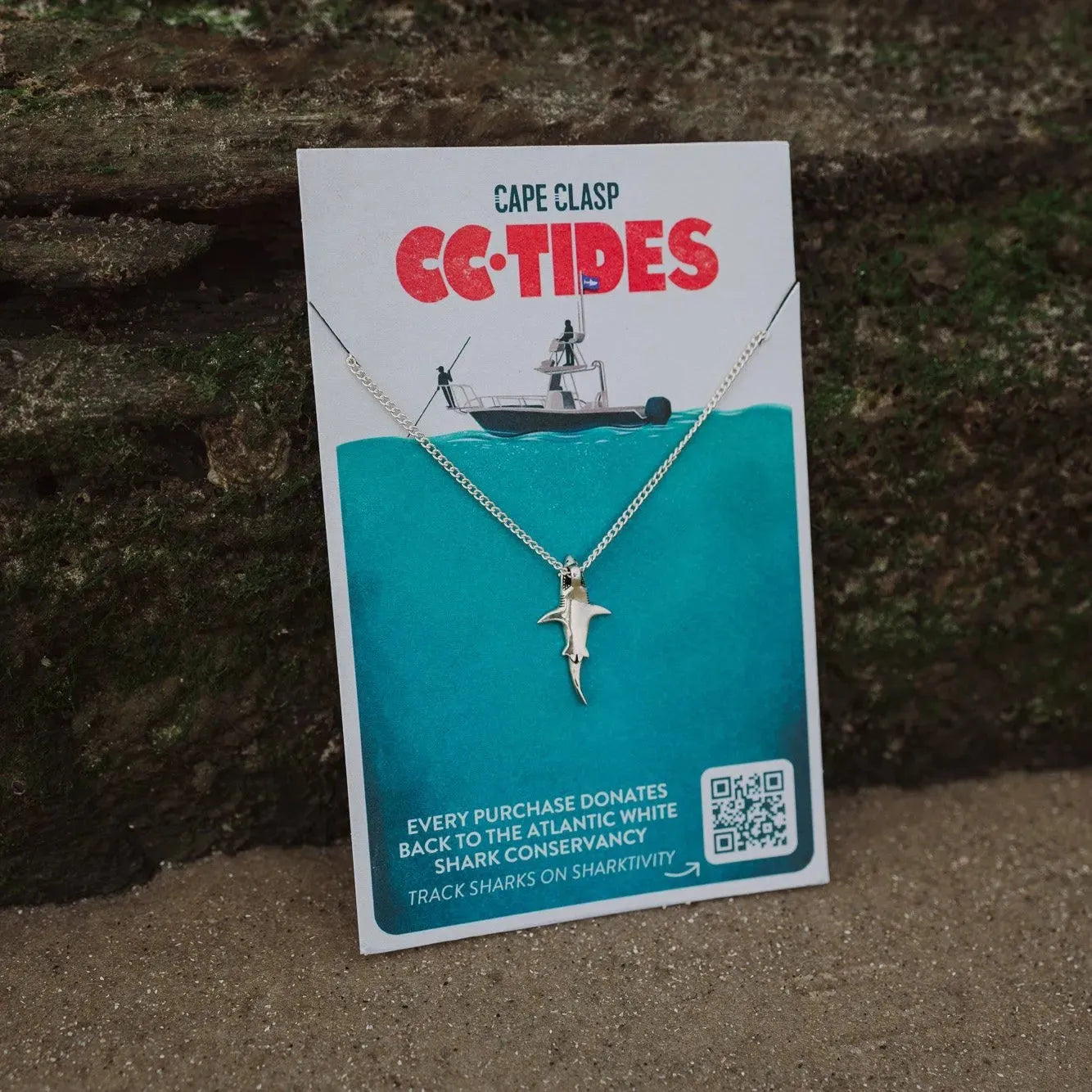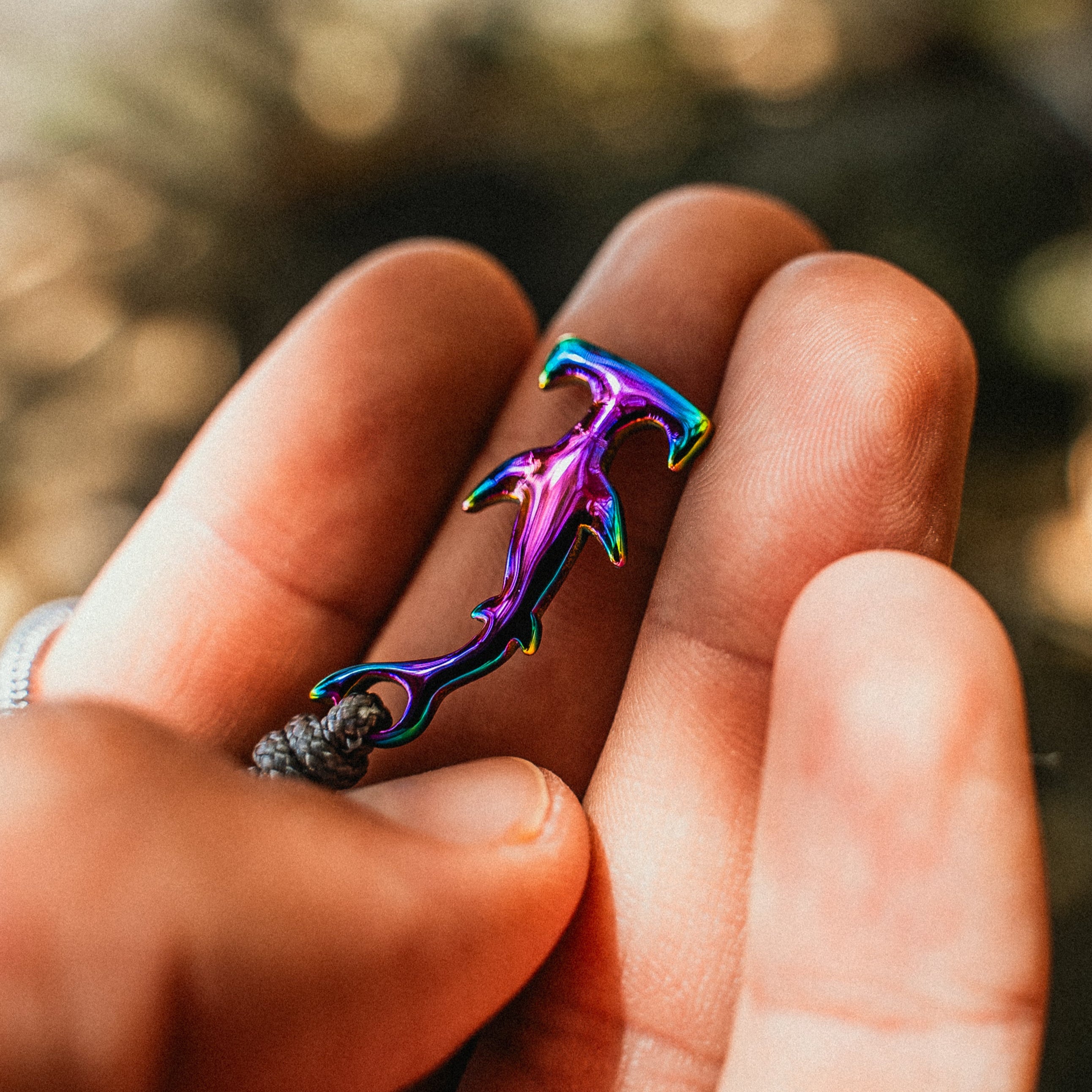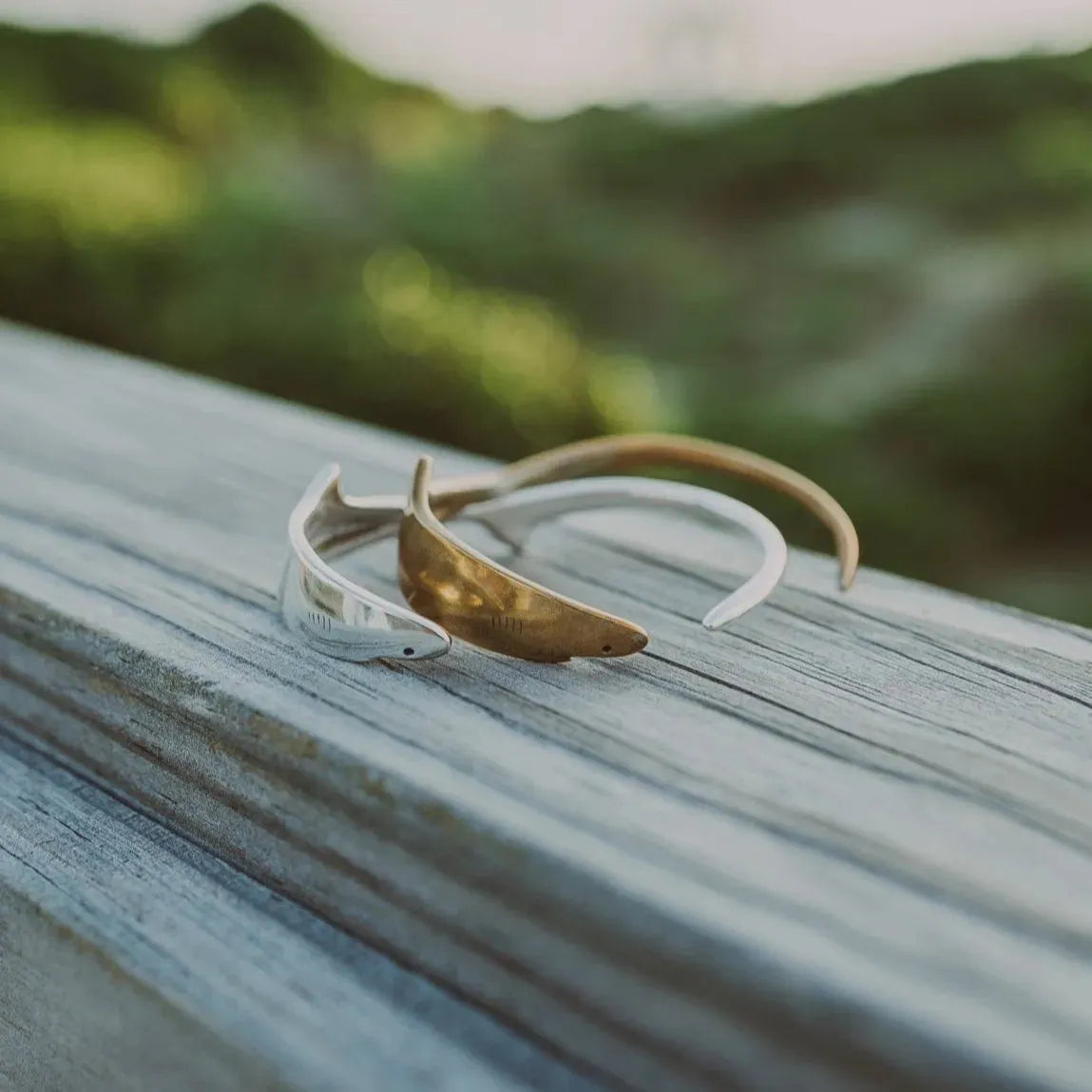
5 Facts About a Shark’s Body
We are launching a new Tides Collection piece on Saturday at 11am EST. Make sure you are signed up for the launch announcement here. To celebrate the new collection, we’ve pulled together some surprising facts about sharks’ bodies.
1. Shark Eyes are Made for Hunting
Sharks have sharp eyesight and can see well in both bright conditions and dark waters because of a reflective layer of tissue known as a tapetum. In fact, it’s been found that great white sharks have ten times the light sensitivity as humans. This keen sense of sight aids sharks when hunting in dark waters.
Shark eyes are designed to not only help them hunt but also to protect them while hunting. Many species have a protective membrane to prevent scratches and injuries to their eyes. Great whites are missing this membrane, so they simply roll their eyes back during an attack to prevent injuries.
As sharp as their eyesight may be, sharks have one weakness when it comes to sight: blind spots. Sharks’ eyes are conveniently placed on the sides of their heads, giving them a nearly 360-degree view of the water around them, aside from blind spots directly in front of and behind them. Hammerhead sharks have an even greater range of sight, but also struggle to see what’s directly in front of their heads.
2. Sharks Can Have Five Different Types of Fins
Most species of sharks have five different types of fins: pectoral, pelvic, anal, caudal, and dorsal. Each type of fin serves a certain purpose that aids the shark in swimming and hunting. It may be best known for cutting through the surface of the water, but a shark’s dorsal fin actually prevents it from rolling over and helps with quick turns when on the hunt.
3. Tail Fins Come in All Shapes and Sizes
Tail fins, also known as caudal fins, are uniquely shaped on each species of shark, but they all share one common feature: the top (dorsal) of the fin is always longer than the bottom (ventral).
The thresher shark’s tail can be just as long as the shark’s body and a deadly weapon during a hunt. The shark whips its tail at astonishing speeds (it’s been clocked at up to 80 miles per hour!) to kill its prey, like sardines.
Nurse sharks also have long tails, but they’re designed to help the shark swim using minimal energy since they have such slow metabolisms. Great white sharks, on the other hand, rely on their powerful tails to propel them through the water at higher speeds.
4. Jaws that are Marvels of Engineering
Every species of shark has teeth that are designed to devour their favorite type of prey. Great white sharks can have up to seven rows of prey-chomping teeth that are designed to tear through the flesh of animals like fish or fat-rich seals. Zebra sharks, on the other hand, have flat teeth that are perfect for crushing snails and shellfish.
The jaws of a shark are also specially adapted to their carnivorous diet. The strange-looking goblin shark shoots its lower jaw forward to capture its prey, known as slingshot feeding.
5. They Have Hardy Stomachs
Despite being at the top of the food chain in most marine ecosystems, sharks still sometimes find themselves eating off the menu. Tiger sharks have been nicknamed the garbage cans of the ocean and for good reason: a full suit of armor was found inside the stomach of one individual!
Sharks can even vomit up their stomachs. The reason behind why they do this depends - it may be to get rid of an indigestible object or caused by stress.
Support shark research with your purchase from our Shark Collection.









